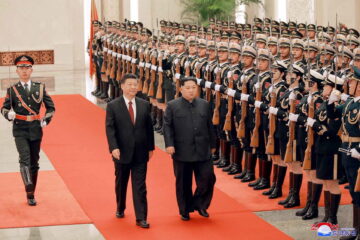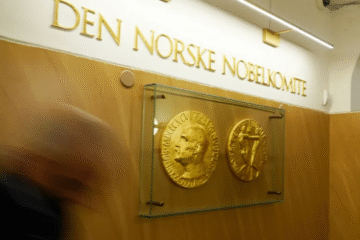Can PUBLIC OPINION really impact Public Policy?
What you want to understand… 🤔
- What are the different ways for public opinion to impact public policies?
- Does public opinion actually impact public policies?
- If yes, under which conditions?
- Is public opinion the most important public policy determinant?
The aggregation of individuals’ views in society makes up public opinion. In a democracy, this collective will is supposed to be taken into account by politicians when designing public policies. They are in fact elected to represent citizens and their interests, which should be reflected in the content of public policies being implemented.
In this essay, we will see to what extent public policy is impacted by public opinion.
First, we will explore the different ways in which public opinion can influence public policy. Then, we will understand the conditions under which the public’s views impact public policy. Eventually, we will compare the importance of public opinion with other determinants of public policy.
I. How can public opinion impact public policies?
Let us first understand how public opinion can impact public policy. This influence can take various forms.
Policies can be a direct response to a specific request. For example, in 2020, the football player Marcus Rashford launched a campaign to advocate for providing free school meals to English pupils. This effort made Boris Johnson’s government change its mind on school meals. They thus responded positively to Marcus Rashford since he managed to draw wide popular support for this cause.
Public opinion can also influence agenda setting which has an impact on public policies. For instance, Anderson et al have showed that in Europe between 1974 and 2015 public opinion gave more importance to environmental issues which resulted in the adoption of more policies in favour of the environment.
The media, a mirror of public opinion as well as an opinion-maker, has an impact on public policies by framing issues in a certain way e.g. crime rate being portrayed as the result of a lack of public investment rather than a question of moral decline. Hence, the media, and through it public opinion, impacts the policy-making process both by orienting it towards certain issues and by pushing for certain solutions rather than others.
II. When can public opinion impact public policies?
We have just seen how public opinion can impact public policy but we still haven’t addressed the question of the extent of this impact. We will now see how often and under which conditions shifts in public opinion impacts public policies.
Shifts in public opinion do not always lead to change in public policies. According to a study by Page and Shapiro, in the second half of the XXth century in the US, public opinion shifts led to either non-congruent changes of policy or no change of policy at all in more than 50% of the cases studied. Mair, and O’Grady and Aboud Chadi explain this by the fact that political parties tend not to be responsive to public opinion or at least to short-term shifts in public opinion. However, it worth noting that for a large number of policies there is not enough data in order to assess whether they have a bearing in public opinion. For those for which data are available, Burstein has found that only half of policy proposals are consistent with opinion data. So if we use this figure and the one found by Page and Shapiro we can understand that in a large number of instances public opinion is not followed by politicians when they design public policies.
We can wonder under which circumstances changes in public opinion have a substantial impact in public policy. Public opinion can have a major influence on public policies when economic elites and business interest groups get involved to defend a cause. In fact, as shown by Gilens and Page, whatever the proportion of public opinion that wants a policy change, the probability that a policy change will ensue remains the same. However, the higher the proportion of the economic elites that wants a policy change, the higher the probability of a policy change. Average citizens’ preferences have a statistically non-insignificant impact on public policy. Average citizens only happen to be coincidental beneficiaries.
Besides, Page and Shapiro underlined the fact that if public opinion undergoes a liberal shift, policies move congruently with this change in 86% of the time whereas it is only 53% of the time for a conservative public opinion change.
As we have analysed, in a large proportion of cases, public policies are inconsistent with the general public opinion. The only way for public opinion to have a substantial impact on public policies is for the general public’s views to be congruent with economic elites’ preferences and/or to be more liberal than conservative.
III. Is public opinion the most important public policy determinant?
We should thus put into perspective the degree of substantiality that public opinion has on public policy with other determinants of public policy.
According to Burstein, the determinants of public policy are numerous and classified into 4 categories: information and public opinion, advocacy activities by interest groups, party balance and broad social, economic and political forces. In some instances, public opinion may not be the factor that has the most substantial impact on public policy. When it comes to welfare policies for instance, demographic data, like the proportion of elderly people in the society, have a far more important weight in the policy-making process.
Nevertheless, compared to the other determinants of public policy, when public opinion about a specific policy proposal is known by policy-makers it has a much bigger impact in the decision-making process. Nonetheless, as Burstein pointed out, there is often a lack of data to support most of the findings in this field of study so these conclusions should be treated cautiously.
Conclusion
We have now come to the conclusion that despite different ways to affect public policy, public opinion’s impact is limited to its congruency with economic elites’ preferences and to its position on a liberal-conservative spectrum. Nonetheless, relatively to other public policy determinants, public opinion when clearly and specifically measured turns out to have a much larger impact, even though more evidence is required to support this claim.



5 Comments
ooki · 4 March 2023 at 11:11 am
I know this web site offers quality based articles and extra information, is there anyother web site which offers such information in quality?
gate.io · 15 February 2023 at 12:50 am
I read your article carefully, it helped me a lot, I hope to see more related articles in the future. thanks for sharing.
mater · 10 February 2023 at 5:00 pm
Hеllo there! This post could not be written any better!
Looking through this post reminds me of my previous roommɑte!
He continually keρt taⅼking about this. I’ll send
this article to him. Ꮲretty sure he’s going to
have a great read. Thanks for shaгing!
betonline nfl · 9 February 2023 at 5:44 pm
Your article is very helpful to me, I will bookmark your website so that I can read it better in the future.
A short History of the Iran-US relationship - geopol-trotters · 18 October 2022 at 5:57 am
[…] the political life of the country, we can say that the Iranian people doesn’t really hold the democratic power promised by the term […]